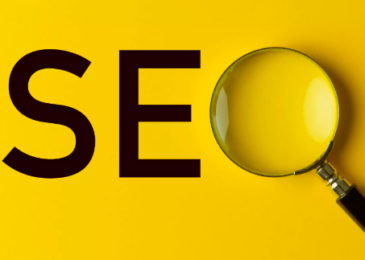In a society where a number of businesses use their own websites and online social media networks to promote themselves, having an understanding of digital marketing and the terms associated with it is essential for an increasing number of people.
Two of the most important terms are SEO and content strategy.
Though these may seem easy to decipher initially, more and more people in the digital marketing world are getting confused.
In fact, some would argue that the terms are virtually interchangeable at this point, but we’d disagree.
Both SEO and content strategy are important to digital marketing, but understanding the differences to them both is absolutely essential if you want to use them as effectively as possible.
This is why we have put together this list, which compiles the main differences between the two.
Content Strategy Brings Readers Value:
SEO can be described as something that goes on in the background, that promotes the website but cannot be directly seen by readers.
Content strategy, by contrast, is the opposite, and involves creating and sharing content that resonates with your readers.
It’s predicted that 50% of readers will read your article for fifteen seconds or less, so it’s important that you are able to quickly provide value in order to maintain the attention from your target audience.
Once you’ve done what you can to bring value to your readers through your content strategy, you will be able to create a positive image of your business in their minds within a shorter period of time.
As a result, when you do target them in advertisements for your products or services, or include links to them in your articles as part of your sales funnel, they are more likely to make a purchase.
Although 57% of B2B marketers went into 2019 without a plan sufficient enough to do this according to Digital Authority Partners, nearly half of all companies did, and it’s sure to have paid off when it comes to their profits.
SEO Is More Technical:
Though there are certainly technical elements involved in content strategy, the majority of the technical side of your website will occur when you are working on SEO.
This is because the fundamental things to focus on when it comes to SEO are search engine algorithms and backlinks.
Algorithms are constantly changing and can change from search engine to search engine, so keeping up on the latest best practices isn’t always easy.
They are also extremely complicated, and with nobody being completely privy to the ins and outs of these algorithms, you have to be super technical to be able to analyze what is and isn’t working.
Backlinks are also important as they help to raise your authority score—sometimes known as domain authority—which is one of the algorithm requirements that will help boost your ranking on Google.
You might not think this is important, but when HealthcareWeekly reports a staggering 93% of searchers don’t move past the front page, you need to be doing everything you can to make sure your website is on it.
Content Strategy Increases Brand Awareness:
Another big difference between SEO and content strategy is that the latter is as the forefront of your brand, and can therefore be used to bring awareness to your business.
This doesn’t mean that your content strategy and the articles you produce will automatically attract the attention of those you want to make aware of your business, however.
In reality, it’s attention grabbing headlines highlighting your story in the most exciting way possible that leads to 59 percent of people sharing an article without even reading it.
Though this may sound like a bad thing in terms of lowering bounce rate for SEO purposes, it’s actually a great way to increase awareness of your brand—at least when you are first starting out.
Some experts suggest that the best way to attract this attention and encourage others to share your brand is to use emotionally-charged words like crazy or amazing and numbers.
SEO Focuses On UX:
According to ComboApp, while content strategy is all about providing value to your reader through written content, SEO is more focused on the user experience on your website, which primarily includes the ease at which it can be navigated.
This is something all website owners should be doing to abide by the ADA and the Web Content Accessibility Guidelines, but SEO makes this even more important.
This is because the more accessible your website is, the better it will perform in search engine algorithms.
For a site to be considered ‘good’ in the eyes of search engines, it should be easily navigational, have a minimalistic, non-cluttered design, and alt tags on photos and videos so that people with sight impairments can gain equal access to the website, among other things.
Summary:
Although SEO and content strategies have many differences between them, We have expertly established that one could not occur without the other.
Content strategies on their own are all about helping you to connect with your audience through what you are producing, and making more people aware that your business exists and has the potential to be better than your competitors.
As great as this is, without SEO working alongside content strategies to make sure that algorithms are showing content from all pages of the website on the first page, it would be impossible to get your eyes in front of the right people.
Perhaps one similarity between the two is that they both work to leave lasting impressions on those who visit your site.
With content strategies, this is done by showing visitors the value your content and your business as a whole can provide in an obvious way.
SEO, on the other hand, works in the background to rewards those who are doing everything they can to make sure an individual’s user experience is the best it possibly can be.
With this being said, using both strategies concurrently is something we actively encourage, but we also recommend learning the differences first to achieve the best results.




